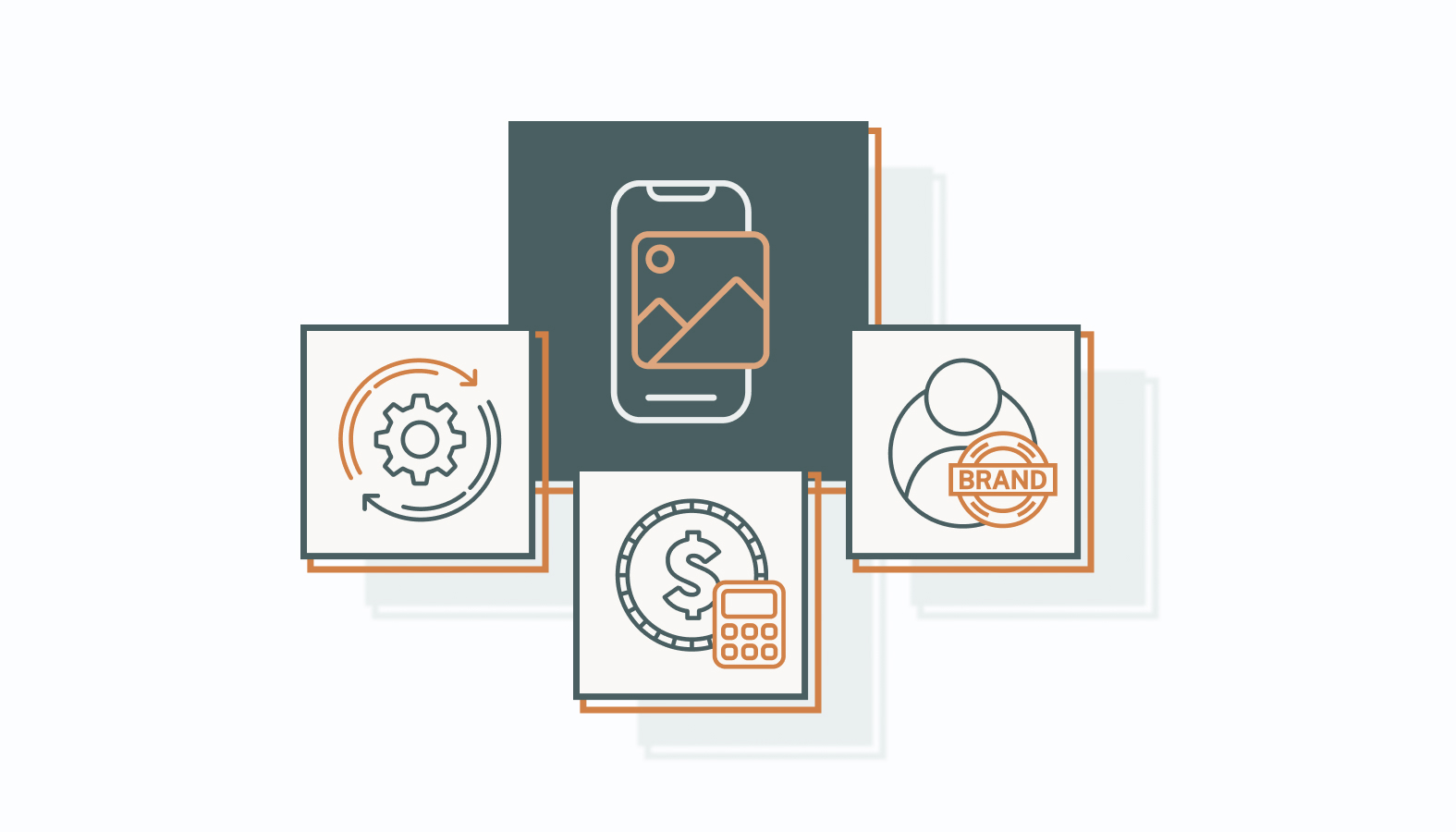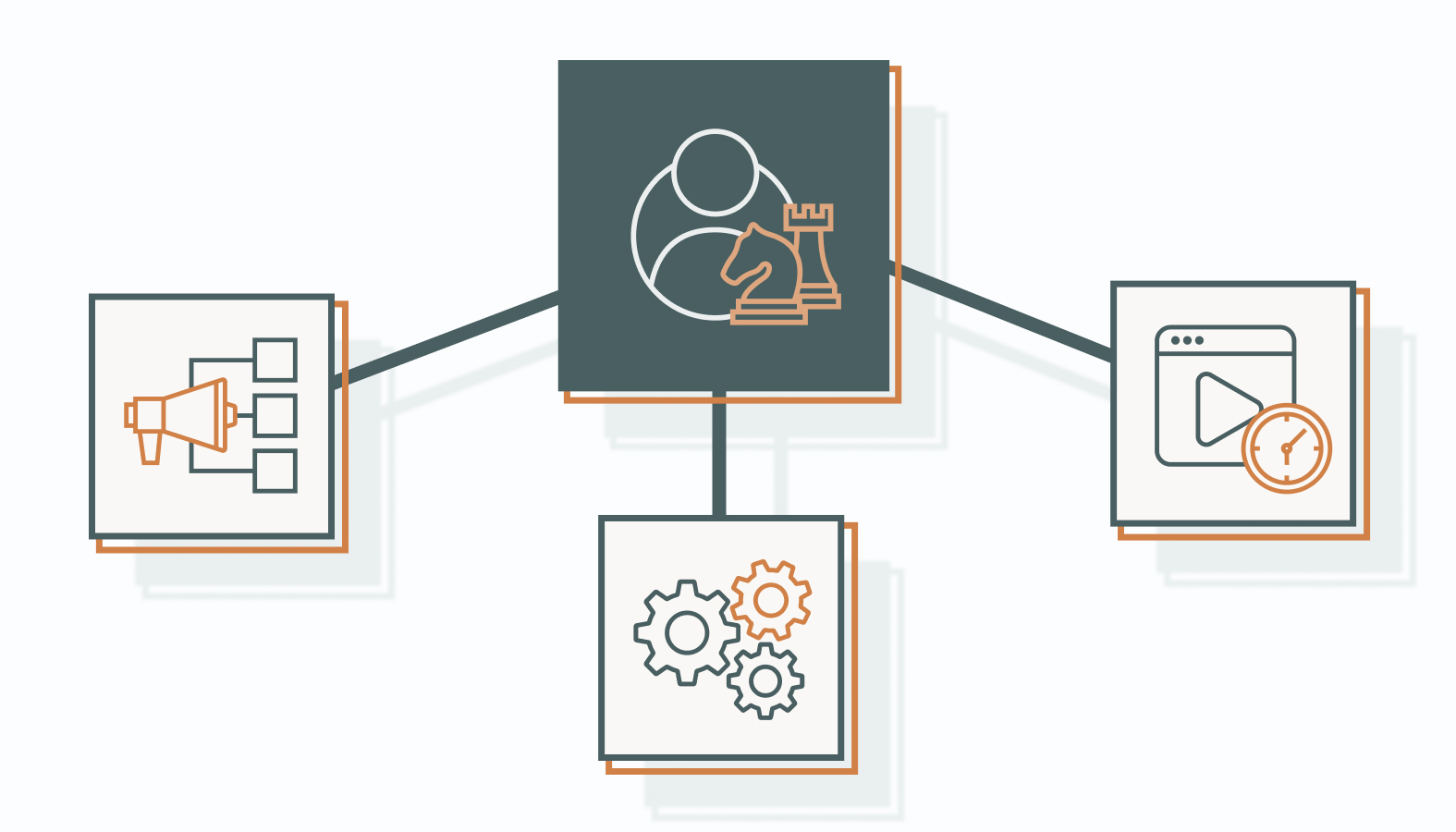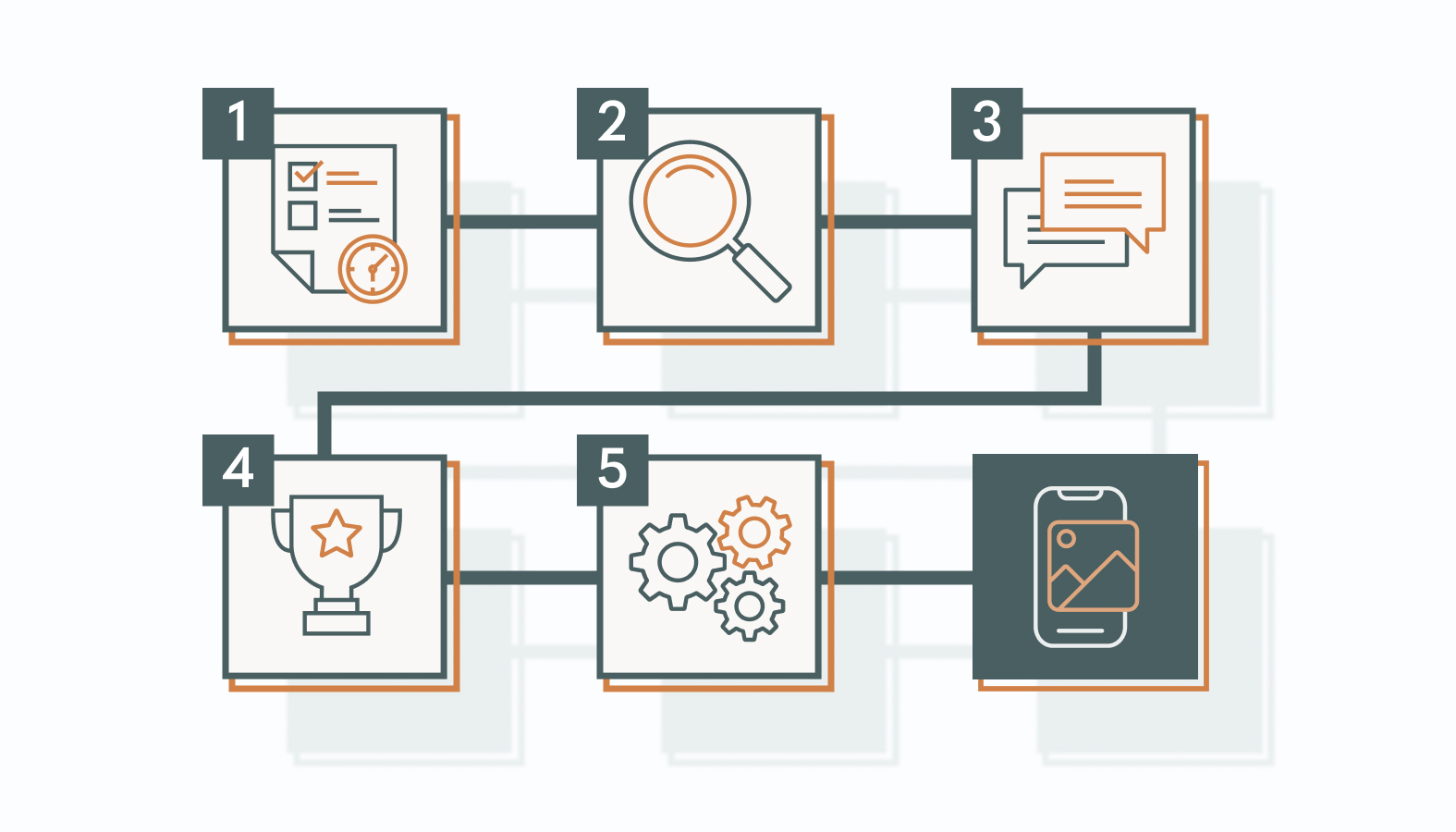Running a SaaS marketing campaign isn’t like selling a physical product or quick-fix service. You’re marketing something people can’t touch, often to teams who need months to make a decision. And even then, the real battle is keeping them around.
That’s why SaaS marketing demands more than clever copy. It calls for a strategy built on positioning, proof, and campaigns designed to earn trust early and compound it over time.
This guide unpacks what makes SaaS campaigns successful today, from standout examples to tactical strategies that drive results across the entire customer journey.
What Makes SaaS Marketing a Different Beast
SaaS marketing isn’t about selling a finished product — it’s about selling continuity. Access, upgrades, support, outcomes. Buyers aren’t just choosing a tool; they’re investing in your team, your process, and your ability to deliver results over time.
That’s what makes SaaS different. You’re not just generating demand; you’re building trust that lasts across the full customer lifecycle. From first touch to renewal, every campaign has to prove value, reduce friction, and meet buyers where they are.
Unlike traditional marketing, you don’t get the luxury of a one-time sale. SaaS buyers take longer to decide, expect personalization, and want to see impact before they commit. The strongest campaigns earn credibility early, reinforce it often, and scale with real-world behavior.
And because the market moves fast, your strategy has to move faster. The best SaaS teams don’t just react to change; they stay ahead of it. They pair strong positioning with clear outcomes, show up consistently, and build systems that adapt as the landscape shifts.
Tackling Long Sales Cycles Without Losing Steam
SaaS sales, especially in B2B, tend to stretch. Decisions involve multiple stakeholders, budget committees, compliance checks, and long-term projections. That kind of friction slows momentum, but it doesn’t have to stall it.
Here’s how to keep complex deals moving:
- Educate early: Equip buyers with case studies, product walkthroughs, and ROI models before the ask.
- Personalize everything: Use automation to map content to each stage, role, and concern.
- Offer proof fast: Free trials, pilots, and success benchmarks give prospects something tangible to hold onto.
- Tighten the loop: Sales and marketing should operate as one unit, aligning around shared KPIs and named accounts.
The goal isn’t to shortcut the process. It’s to remove guesswork, smooth friction, and build consensus faster.
If You Can’t Prove ROI, You’ll Lose the Deal
In SaaS, value isn’t a tagline. It’s a number. Prospects want to see how your product improves their bottom line without hunting through vague feature lists or bloated decks. If you can’t connect the dots for them, someone else will.
The most effective marketers lead with clarity:
- Quantify outcomes: Show hard numbers — efficiency gains, churn reduction, revenue impact.
- Highlight social proof: Use customer quotes and mini-case studies to demonstrate success in context.
- Make it interactive: ROI calculators and benchmarks turn abstract benefits into personalized projections.
HubSpot sets the bar here, giving prospects multiple ways to see the value for themselves before they ever talk to sales.
Make It Personal: Brands That Feel Human Win
SaaS can easily come off as cold, just another login screen. But the brands that dominate the space are the ones that feel human. They’re approachable, real, and easy to trust.
Here’s how top SaaS brands keep it personal:
- Put faces behind the product: Show your team. Share real stories. Go beyond the logo.
- Write like a person: Ditch the buzzwords. Use clear, friendly language. Speak with empathy.
- Engage like you mean it: Respond to feedback, participate in conversations, and show customers they matter.
A little personality goes a long way in a crowded category. People stick with brands that don’t just solve problems but feel like partners while doing it.
Up next, we’ll explore the distinction between strategy and campaign, and how both are essential to building the best SaaS marketing campaigns in today’s hyper-competitive market.
Strategy vs. Campaign: Why You Need Both
In SaaS marketing, “strategy” and “campaign” often get thrown around like synonyms. They’re not. Knowing the difference is essential if you want to build anything that lasts.
- A strategy is your high-level blueprint. It’s the logic behind every decision, the map that shows where you’re going and why it matters.
- A campaign is execution. It’s the project you launch to achieve a specific goal within that bigger plan.
Think of it like this: strategy is the operating system, while campaigns are the apps that run on it.
Strategy vs. Campaign: The Distinction
- Long-range and built to scale with your business
- Defines your market position, audience, messaging, and channel mix
- Focuses on alignment with broader company objectives
Example: “Establish our platform as the top collaboration tool for mid-market remote teams”
Marketing Campaign:
- Tactical, time-bound, and results-driven
- Executes specific messaging and creative within the strategy
- Drives measurable progress toward one defined outcome
Example: “Run a 90-day LinkedIn campaign using customer success stories to offer a free trial for remote teams.”
How Strategies and Campaigns Work Together
Imagine your strategy is to own the “best-in-class customer support” narrative in your niche.
Your campaigns might include:
- A content marketing campaign that publishes weekly support tips and customer success stories.
- An email nurture campaign targeting churn-risk customers with exclusive support resources.
- A referral program campaign rewards users for sharing positive experiences.
Each campaign hits a different touchpoint, but they’re all pulling in the same direction. When strategy and execution sync, you stop chasing random wins and start building sustained growth.
SaaS Marketing Campaigns Worth Stealing From Today
Studying top-performing SaaS campaigns is more than inspiration. Use it as competitive intel.
The best campaigns of 2025 are calculated, channel-savvy, and built around how today’s buyers actually behave. Below, we break down five campaigns that were executed with precision and left a mark.
Canva’s Engagement-Driven Design Campaign
In 2025, Canva dialed up user activation by pushing creativity front and center. Their campaign encouraged users to stop browsing and start building using design challenges, community-driven prompts, and creator incentives to make interaction a habit.
Tactics included:
- Weekly contests with tangible rewards
- Live virtual events led by design influencers
- Smart in-app prompts nudging users to test new features
Impact: Engagement surged. Daily active usage jumped, social shares climbed, and the product became sticky, not just by design but through design.
Canva’s brand became synonymous with creativity and collaboration, further cementing its place as a go-to design platform for individuals and teams alike.
Dropbox’s Referral Engine That Keeps Giving
Dropbox revived and evolved its iconic referral model in 2025. Instead of one-size-fits-all incentives, rewards were scaled based on usage, needs, and user profile.
How they pulled it off:
- Built-in, low-friction referral links
- Tiered rewards based on user value
- Automated prompts timed to peak engagement moments
Result: Referral-driven sign-ups spiked, but more importantly, those users stuck. Warm leads from personal invites converted better and churned less.
HubSpot’s Inbound Machine That Doesn’t Quit
HubSpot’s inbound strategy stayed relentless. In 2025, they doubled down on utility, meeting prospects at every step with content, tools, and support tailored to real-time needs.
Playbook highlights:
- Data-backed content tied to live search behavior
- Email sequences mapped to persona and funnel stage
- Interactive tools like calculators and ROI benchmarks
Why it worked: It scaled trust before sales even entered the chat. The result is high-quality leads with lower acquisition costs and long-term brand equity baked in.
Slack’s Mastery in Turning Free Users Into Paying Fans
Slack’s freemium model is the gateway drug of workplace collaboration tools. In 2025, Slack refined its conversion playbook, focusing on seamless upgrades and personalized nudges for teams hitting usage limits.
Instead of pushing upgrades generically, they matched prompts to behavior.
What they optimized:
- In-app messages tailored to feature usage
- Upgrade CTAs triggered by actual user needs
- Onboarding support for teams ready to scale
What changed: Conversion rates climbed. Free users hit friction points, saw value in the next tier, and upgraded without a hard sell.
Zoom’s Expertise in Scaling Visibility Through Smart Partnerships
Zoom, already a household name, turned to strategic partnerships in 2025 to deepen its reach. By collaborating with industry leaders in education, healthcare, and event management, Zoom created co-branded campaigns that showcased unique use cases.
How they executed:
- Joint webinars with leading education and healthcare brands
- Co-branded content that tackled niche problems
- Bundled offers that created win-win incentives
Result: Zoom didn’t just gain exposure; it gained credibility in high-barrier verticals, opening doors and accelerating adoption in new segments.
These five campaigns didn’t go viral by accident. They were built with clarity, empathy, and strategic rigor. If you’re building SaaS campaigns in 2025, this is the bar. Study what worked, adapt it for your audience, and aim higher.
How to Build a Successful SaaS Marketing Campaign
High-impact SaaS campaigns aren’t built on vibes or guesswork. They’re engineered, planned with precision, shaped by research, and refined through real-time feedback. Every step, from strategy to execution, should be tailored to your product, market, and growth stage.
The campaigns that perform best are built on clarity, aligned with business goals, and agile enough to evolve as the data rolls in.
Here’s how to build one that performs.
Step 1: Plan Like You Mean It
A successful SaaS campaign starts with structured planning. That means clear goals, a deep understanding of your audience, and the discipline to manage budget and execution with intent.
Set Goals You Can Actually Measure
Start with outcomes that tie directly to business growth.
Use SMART (Specific, Measurable, Achievable, Relevant, and Time-bound) goals that align with leadership priorities.
Example: “Increase qualified leads by 30% in Q3.”
When your targets reflect company objectives, your campaign earns traction where it matters most.
Know Who You’re Talking To and What They Care About
Your audience isn’t just defined by roles or firmographics. Use behavior-based segmentation to build personas that reflect pain points, buying triggers, and objections.
Pull insights from platforms like Mixpanel, Hotjar, and your CRM to understand how users interact with your product and content. Build messaging around what they do, instead of just focusing on what they say.
Budget Like a CFO, Execute Like a CMO
Ideas need fuel. Plan for media, creative, tools, testing, and contingency.
Assign ownership early: who’s handling automation, paid media, analytics?
Track ROI in real-time and reallocate quickly. Budget discipline gives you room to test and space to scale when something works.
Step 2: Use Market Intel to Sharpen Your Edge
Your campaign doesn’t operate in isolation. Competitors, market trends, and shifting buyer behavior are all signals. Use them.
Spy Smart: How to Learn from Your Rivals
Your competitors are already testing the waters. Study what works and what flops.
- Identify direct, indirect, and aspirational players in your space.
- Use tools like SEMrush, Ahrefs, or SimilarWeb to analyze their SEO, paid strategy, and content mix.
- Review G2, Capterra, and Reddit threads to surface user frustrations. Those gaps are your angle.
The goal isn’t to copy. It’s to pinpoint where you can deliver better, faster, or with less friction.
Read the Room: Spot Trends Early and Act Fast
Markets evolve quickly. Timeliness beats polish when a wave is coming.
- Scan Exploding Topics, Google Trends, and niche communities for early signals.
- Watch what your target audience is already engaging with (before it hits mainstream).
- If a new use case or integration aligns with your product, build the campaign now. Don’t wait for consensus.
Craft a Value Prop That’s Sharp and Memorable
Your value proposition should be easy to say and hard to ignore.
- Start with genuine customer feedback. What’s the biggest problem you solve better than anyone?
- Turn that into a benefit-led statement that’s short, specific, and testable. Example: “Cut report prep time in half. No dev required.”
- If it takes more than one read to get it, revise it.
Strong positioning isn’t about being clever. It’s about being clear. Use it to anchor every touchpoint that follows.
Step 3: Match Message to Channel and Make It Count
Right message, right place, right time. That’s the secret sauce.
Choose the Right Marketing Channels
Skip the spray-and-pray approach. Focus on where your audience engages and where your team can execute with confidence.
- Evaluate reach, cost, and time-to-impact.
- Prioritize channels (SEO, paid, email, social, events) that align with your buyer’s journey, then build outward.
- Use brand and performance together if the budget supports it.
- Run small tests, validate performance, then scale what proves effective.
Develop a Content Plan That Pulls Its Weight
Content is only helpful if it leads somewhere.
- Create an editorial calendar mapped to funnel stages.
- Use blogs, videos, emails, and webinars to answer questions and clear objections.
- Every asset should guide the next step, whether to opt-in, demo, share, or sell. No dead ends.
Optimize for Buyers, Not Just Bots
Strong SEO is more than rankings. It earns attention and drives qualified action.
- Focus on high-intent keywords that signal urgency or evaluation.
- Structure content clearly: answer what buyers are searching for.
- Keep your tech stack clean. Pick platforms and technologies with fast load times, that are mobile-ready, and without broken logic.
- Revisit and refresh top-performing content monthly to keep it converting.
Channels and content aren’t just boxes to check. They’re levers. Use them to move decisions forward.
Step 4: Run the Play from Launch to Lasting Impact
Strategy gets you to the starting line. Execution decides if you finish strong.
Nail the Launch: No Loose Ends Allowed
Details matter. Don’t ship until everything’s locked. Here’s a quick checklist:
- QA every link, asset, CTA, and pixel
- Test landing pages across devices and browsers
- Prep your team on support flows, escalation, and timing
- Use a soft launch to collect feedback, then scale with confidence
Talk With Your Audience, Not At Them
SaaS buyers don’t want a broadcast. They want a conversation.
- Run interactive formats, such as webinars, AMAs, or live demos.
- Respond fast via chat tools like Intercom or Drift.
- Capture every question and comment, then use them as feedback, intel, and opportunity.
Pivot Fast When the Data Talks
Your campaign is only as smart as your last decision.
- Cut spend from deadweight channels
- Swap messaging that’s stalling engagement
- Rethink nurture flows based on live behavior, not assumptions
Excellent execution isn’t rigid. It’s responsive. That’s how you turn a launch into serious momentum.
Step 5: Keep the Engine Running; Track, Learn, Optimize
A proper launch gets you off the ground. Sustained growth comes from relentless iteration and optimization.
Watch the Right Metrics and Ignore the Vanity Ones
Don’t measure everything. Measure what moves.
- Focus on core SaaS KPIs: lead quality, funnel conversion, CAC, LTV, and churn
- Build dashboards that surface decisions, not just numbers
- Automate reporting where it saves time, then analyze what requires judgment
Turn Campaign Data Into Smart Decisions
Performance data is only valid if it drives change.
- Compare actuals to plan and flag deviations early
- Identify drop-off points, winning assets, and channel performance
- Share insights across teams (marketing, sales, product, support)
Data-driven decisions lead to smarter budgets and better results.
Refine What Works. Ditch What Doesn’t. Repeat.
Never settle. Your campaign should evolve based on what you learn.
- Run regular retrospectives to gather team insights
- Implement iterative A/B testing on key elements (ads, emails, CTAs)
- Document learnings and apply them to future campaigns
The best SaaS marketing campaigns are built on continuous improvement. They evolve quickly, improve consistently, and stay a step ahead of the competition.
Lessons from SaaS Leaders Who Got It Right
If you’re aiming to build a standout SaaS marketing campaign, the smartest move is to study those who’ve already paved the path, wins and misses included. Top SaaS companies don’t leave success to chance. They test, learn, and refine with purpose.
By unpacking what actually worked, you can accelerate your own results and avoid the usual landmines.
Innovate Fast, Adapt Faster
Great SaaS campaigns don’t wait for permission. The market moves quickly, and standout brands move quicker. The most effective teams test early, pivot often, and respond to what users care about.
Examples worth noting:
- AI-Powered Personalization: Intercom uses AI to personalize onboarding and in-app messaging, creating scalable one-to-one communication.
- Interactive Demos: Some SaaS leaders swapped static video tours for live product sandboxes that let prospects explore without sales pressure.
- Viral Loops: Dropbox and Notion didn’t just grow; they scaled by turning customers into advocates through shareable templates and smart referral programs.
What makes these work is a readiness to change course when the data shifts. Teams that test fast and optimize faster consistently outperform those who hesitate.
Build Relationships That Outlast Your Churn Rate
SaaS success doesn’t stop at acquisition. Long-term growth is built on retention, and the best campaigns are designed to keep users engaged.
Strategies that drive long-term loyalty:
- Onboarding Excellence: Slack and HubSpot invest in guided onboarding, helpful content, and rapid support to shorten time-to-value.
- Community Building: Canva and Notion built thriving user communities that create content, solve problems, and celebrate wins together.
- Proactive Support: Smart brands use live chat, in-app nudges, and automated check-ins to stay ahead of user friction before it snowballs.
These approaches reduce churn and increase lifetime value not by gimmicks but by building trust that users don’t want to lose.
Use the Right Tools and Use Them Well
Tech doesn’t fix strategy, but it can scale it. The best SaaS marketers use tools to eliminate busywork, gain insight, and drive meaningful interaction with the right segments.
Here’s what that looks like:
- Marketing Automation: HubSpot, Customer.io, and Marketo help teams automate lead nurturing, scoring, and segmentation so they can focus on strategic plays.
- Advanced Analytics: Mixpanel, Amplitude, and GA4 reveal what users do, not just what they say. That’s where precise targeting begins.
- A/B Testing Platforms: Tools like Optimizely and VWO make it easy to run clean experiments and quickly validate which elements drive performance improvements.
Bottom line: use tech to amplify your strategy, not distract from it. When the right tools are well-configured and purpose-driven, they become competitive advantages.
By studying SaaS campaigns that prioritize innovation, loyalty, and brilliant execution, you’re not just following best practices. You’re building a system that scales efficiently, strategically, and with staying power.
Future-Proofing Your Strategy
SaaS success doesn’t come from one big win. It’s built on clarity, consistency, and campaigns that evolve with your audience. The best teams don’t just launch; they learn, iterate, and optimize in real time.
Great SaaS marketing is grounded in fundamentals:
- Clear goals tied to business impact
- Messaging that speaks to real outcomes
- Savvy use of tools, data, and creative
- Relentless focus on testing and refinement
Don’t try to fix everything at once. Start small. Tighten one campaign. Test one new tactic. Learn fast, and keep improving. Progress starts with a single strategic decision.
Want a Second Set of Eyes on Your SaaS Marketing Strategy?
If you’re reworking your approach or need a gut check on what’s working, we’re here to help. No pitch, no fluff — just a focused, honest conversation with someone who’s been in your shoes.
Schedule a quick consult with one of our marketing experts,» and walk away with clarity.










